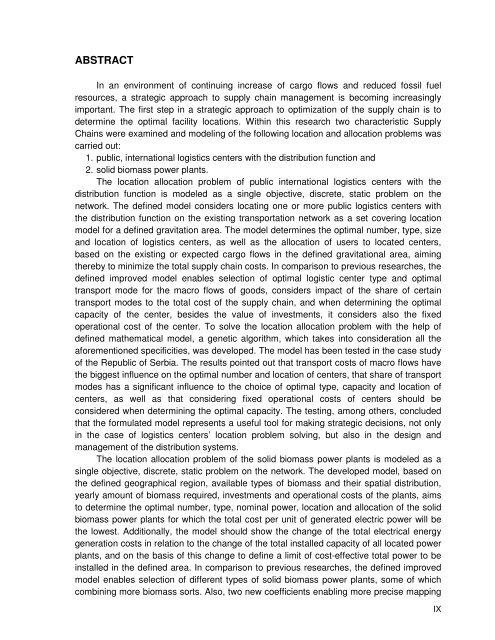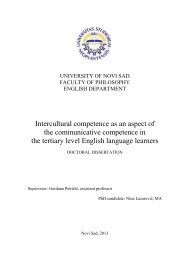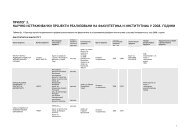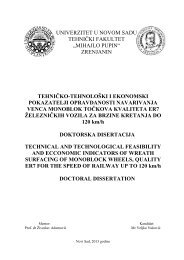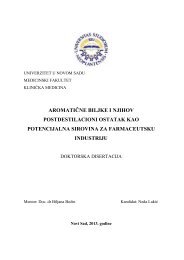Disertacija - Univerzitet u Novom Sadu
Disertacija - Univerzitet u Novom Sadu
Disertacija - Univerzitet u Novom Sadu
You also want an ePaper? Increase the reach of your titles
YUMPU automatically turns print PDFs into web optimized ePapers that Google loves.
ABSTRACT<br />
In an environment of continuing increase of cargo flows and reduced fossil fuel<br />
resources, a strategic approach to supply chain management is becoming increasingly<br />
important. The first step in a strategic approach to optimization of the supply chain is to<br />
determine the optimal facility locations. Within this research two characteristic Supply<br />
Chains were examined and modeling of the following location and allocation problems was<br />
carried out:<br />
1. public, international logistics centers with the distribution function and<br />
2. solid biomass power plants.<br />
The location allocation problem of public international logistics centers with the<br />
distribution function is modeled as a single objective, discrete, static problem on the<br />
network. The defined model considers locating one or more public logistics centers with<br />
the distribution function on the existing transportation network as a set covering location<br />
model for a defined gravitation area. The model determines the optimal number, type, size<br />
and location of logistics centers, as well as the allocation of users to located centers,<br />
based on the existing or expected cargo flows in the defined gravitational area, aiming<br />
thereby to minimize the total supply chain costs. In comparison to previous researches, the<br />
defined improved model enables selection of optimal logistic center type and optimal<br />
transport mode for the macro flows of goods, considers impact of the share of certain<br />
transport modes to the total cost of the supply chain, and when determining the optimal<br />
capacity of the center, besides the value of investments, it considers also the fixed<br />
operational cost of the center. To solve the location allocation problem with the help of<br />
defined mathematical model, a genetic algorithm, which takes into consideration all the<br />
aforementioned specificities, was developed. The model has been tested in the case study<br />
of the Republic of Serbia. The results pointed out that transport costs of macro flows have<br />
the biggest influence on the optimal number and location of centers, that share of transport<br />
modes has a significant influence to the choice of optimal type, capacity and location of<br />
centers, as well as that considering fixed operational costs of centers should be<br />
considered when determining the optimal capacity. The testing, among others, concluded<br />
that the formulated model represents a useful tool for making strategic decisions, not only<br />
in the case of logistics centers’ location problem solving, but also in the design and<br />
management of the distribution systems.<br />
The location allocation problem of the solid biomass power plants is modeled as a<br />
single objective, discrete, static problem on the network. The developed model, based on<br />
the defined geographical region, available types of biomass and their spatial distribution,<br />
yearly amount of biomass required, investments and operational costs of the plants, aims<br />
to determine the optimal number, type, nominal power, location and allocation of the solid<br />
biomass power plants for which the total cost per unit of generated electric power will be<br />
the lowest. Additionally, the model should show the change of the total electrical energy<br />
generation costs in relation to the change of the total installed capacity of all located power<br />
plants, and on the basis of this change to define a limit of cost-effective total power to be<br />
installed in the defined area. In comparison to previous researches, the defined improved<br />
model enables selection of different types of solid biomass power plants, some of which<br />
combining more biomass sorts. Also, two new coefficients enabling more precise mapping<br />
IX


